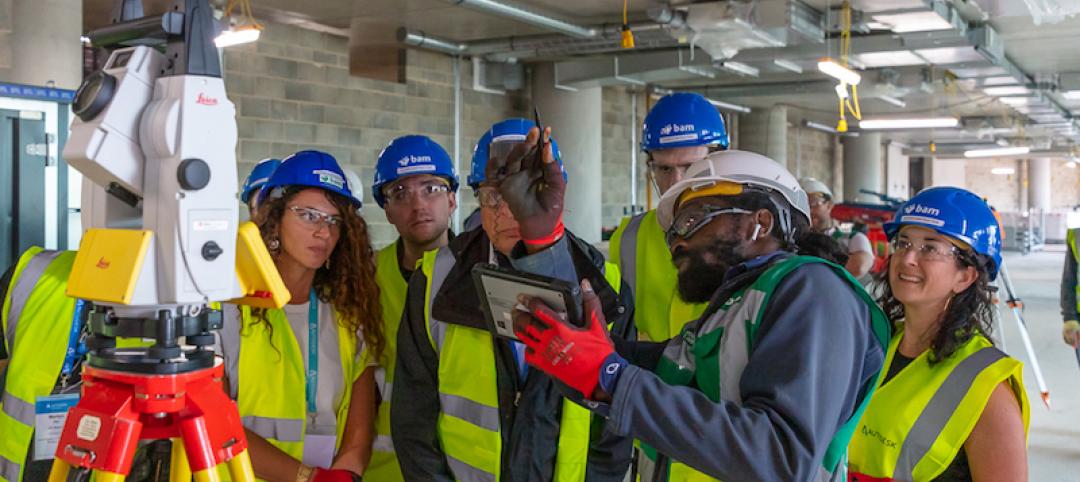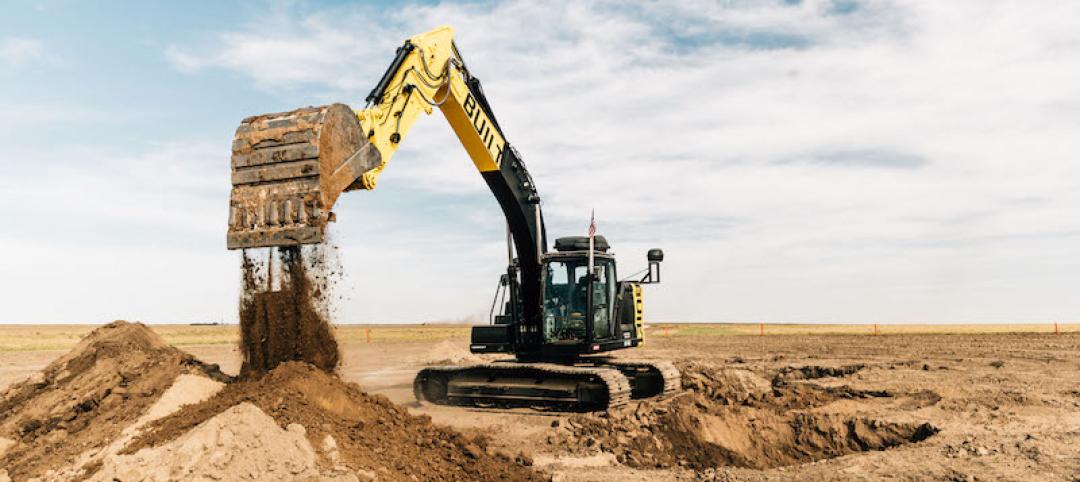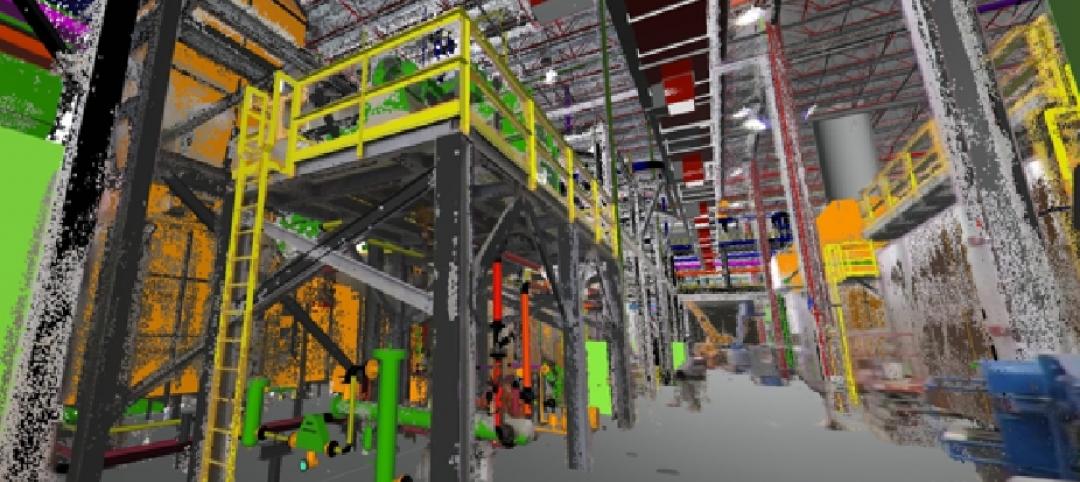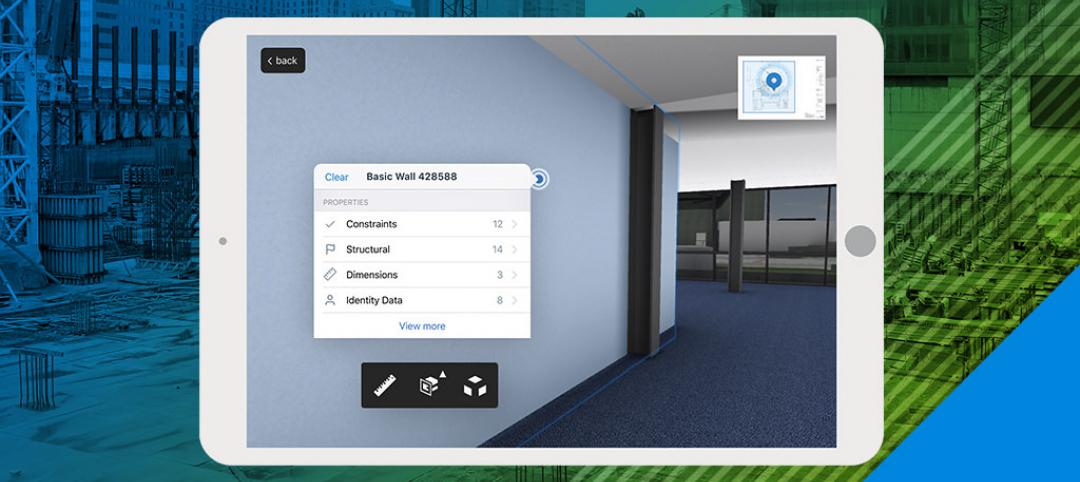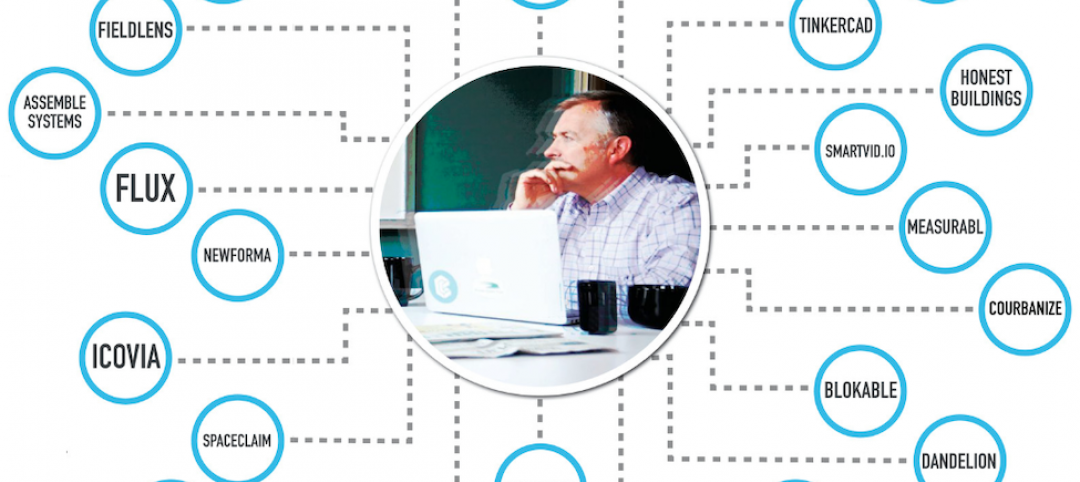The relationships between buildings and machines have always defined the fields of design and construction. More than 2,000 years ago, in the first treatise on architecture, Vitruvius dedicated all of the final volume to machines. Since then, arguably the entire history of construction has centered on the movement away from handicraft toward progressive degrees of mechanization. Today, mechanization, the replacement of hand labor, is increasingly giving way to automation, the replacement of human labor altogether.
Below are four fundamental relationships between buildings and machines. As automation becomes more prominent, it is changing these relationships dramatically.
Machines in Buildings
Over the past century or two, new mechanisms have fundamentally redefined the possibilities of buildings. After Elisha Otis invented the safety elevator in 1852, buildings could climb well beyond a comfortable walk-up height, and the skyscraper was born.
In 1902, Willis Carrier introduced modern air conditioning, which allowed floor plates to get deeper (spurring a century of energy hogging). The bimetallic thermostat, an example of automation dating from the 1880s, long has been a staple in homes and offices everywhere. Building automation systems (BAS) apply this concept systemwide, with internal feedback adjusting HVAC and lighting to improve comfort, security, energy consumption, maintenance, and operating costs.
The Internet of Things (IoT) connects computers embedded in everyday objects, including buildings, to expand these feedback loops beyond the immediate building to the entire world. Over the next few years alone, instances of IoT are expected to double in commercial real estate. Buildings are coming to be defined less as static objects and more as completely fluid environments.
Machines for Building
Ancient structures were assembled with a few simple tools, and the oldest may have used none at all. Possibly the earliest known “constructions,” during the Stone Age, were made of Mammoth bones lashed together to form huts. With the agricultural revolution, communities became less nomadic, and buildings became less portable, leading to heavier construction and the need for more powerful tools.
The industrial revolution catapulted whole industries and economies with mass-produced timber and steel. The history of construction since then has been propelled by leveraging more and more force, and today gigantic machines for digging and lifting dominate large construction sites.
But emerging automated techniques could return building fabrication to its origins in lightweight assembly methods. Homes are being 3D printed in 24 hours at a fraction of the expense of traditional construction. Bricklaying robots can assemble a wall at half the cost and 3-5 times the productivity. Soon, clouds of flying assembler drones could become the norm, making construction sites buzz and thrum like beehives or ant hills.
Buildings as Machines
“A house is a machine for living in,” Le Corbusier famously declared in 1929, and the mechanical metaphor became a foundational premise of modern architecture. Later, the machine aesthetic became more explicit. The Centre Pompidou in Paris (1977) wore its systems on its sleeve, the primary architectural expression coming from equipment, ductwork, and conveying systems.
But metaphor could soon become reality. Nanotechnology, originally proposed by Nobel physicist Richard Feynman half a century ago, manipulates individual atoms and molecules to build things—anything. Already, researchers have successfully experimented with nanotech in concrete and steel, strengthening materials and improving performance by adjusting automatically to offset stress and strain.
‘Buildings are coming to be defined less as static objects and more as
completely fluid environments.’ — Lance Hosey, FAIA, LEED Fellow, Gensler
Experts anticipate that within the next few decades, whole buildings could be fabricated using microscopic robots, which would join to make a cybernetic glue, eliminating traditional material constraints. Standard, irreducible components, such as the 2x4, the brick, and steel shapes, could be replaced by microscopic parts, and form, texture, color, and strength could be defined at the cellular level.
Orthogonal geometry, demanded for efficiency by standard frame construction, could disappear altogether. A century ago, Frank Lloyd Wright described “organic architecture” as “building the way nature builds.” Nanotech could finally bring this to fruition.
By modifying themselves over successive generations, ebbing and flowing in endless cycles of reproduction and adaptation, nano-assemblers could produce architecture through a process similar to genetic evolution—only faster—and therefore build exactly the way nature builds.
Buildings by and for Machines
In previous articles in this series, we’ve explored the implications of artificial intelligence. Futurist Ray Kurzweil predicts that machines will achieve human-level intelligence within a decade, and this will affect every industry, including our own.
If and when AI drives the entire process of design, construction, and operation, buildings could become exponentially smarter with resources, money, time, and performance, creating environments more engaging and comforting than we can imagine right now.
Yet, Kurzweil also anticipates that within a century we will concede that machines have legal and civil rights. Will self-aware buildings become as privileged as their inhabitants? How will our relationship with buildings change if we begin to see them as our equals? Machines could become more like us, but we could become more like them, as well.
Kurzweil is certain that artificial enhancements of the human body will become more common until we are more synthetic than organic. It will become possible to scan the mind and download it into more durable or flexible containers—such as buildings. Dwelling and dweller could become one and the same.
Lance Hosey, FAIA, LEED Fellow, is a Design Director with Gensler. His book, The Shape of Green: Aesthetics, Ecology, and Design, has been an Amazon #1 bestseller in the Sustainability & Green Design category.
Related Stories
AEC Tech | Jul 2, 2019
Living in a cloud: What nanotech means for architecture and the built environment
Could there come a time when buildings will become less about bricks and mortar and feel more like mists or fogs?
AEC Tech | Jun 28, 2019
In London, Autodesk homes in on construction management
The software goliath sounds the alarm about the urgent need for productivity improvements to address unbridled urbanization.
Giants 400 | Jun 26, 2019
How are the AEC Giants faring in the tech arms race?
About half (42%) say their firm is “on par” with their most-direct AEC competitors.
AEC Tech | Jun 10, 2019
Mortenson joins forces with robotics technology producer
The partners will focus on equipment used for earthmoving in wind and solar projects.
AEC Tech | May 15, 2019
AI and digital twin firm Reconstruct Inc. closing $7.7 million Series A investment
Reconstruct’s AI and digital twin capabilities provide indoor/outdoor views for project stakeholders to track and resolve project issues in a virtual environment before they impact cost and schedule.
AEC Tech | May 7, 2019
Can machines design?
Instead of debating about whether machines can design, why don’t we ask, What if they could? How might architecture change if computers take over the process entirely?
Codes and Standards | Apr 25, 2019
Report: Contractors invest $1.6 billion in workforce development annually
ABC members increased training spending 45% from 2013, according to a new report.
AEC Tech | Apr 24, 2019
PlanGrid Delivers BIM Data in 2D and 3D Directly to Mobile Users in the Field
One of the construction industry’s most widely-used mobile technologies makes critical data accessible in the field with first major Autodesk integration after acquisition.
Digital Twin | Apr 24, 2019
Can Digital Twin make project management more efficient?
One leading owner’s rep is pushing that idea with its “OneModel” BIM-sharing approach.
Movers+Shapers | Apr 19, 2019
AEC angel investor
Jesse Devitte is among the prescient venture capitalists who’ve bet on the AEC industry finally coming around to design and construction technology.




